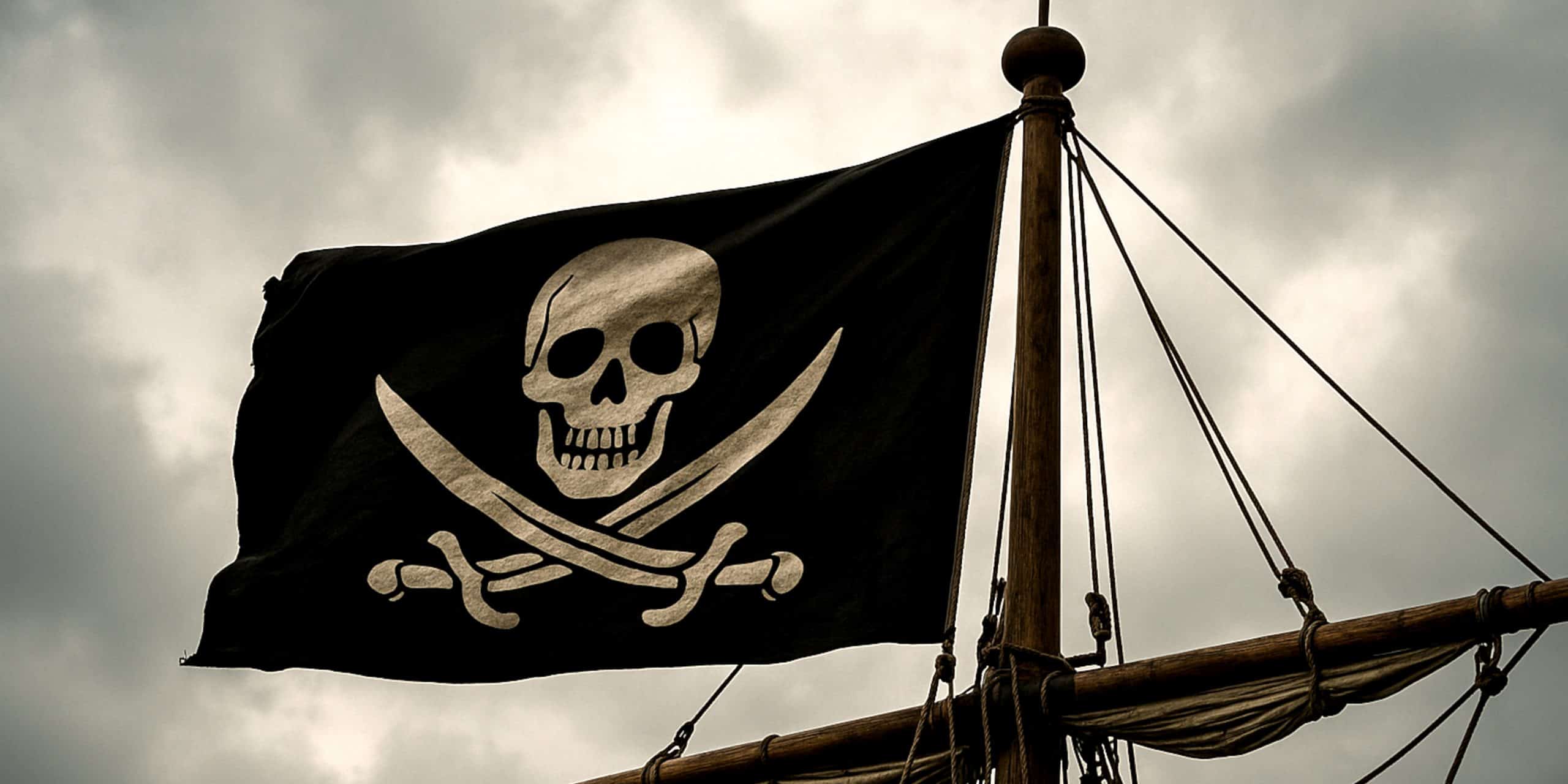When a black flag with a skull and crossbones rose over the horizon, sailors knew terror had arrived. But the pirate flag known as the Jolly Roger was more than just a threat. Beneath its grim face lies an ancient, esoteric meaning that reaches back through Christian ritual, alchemical wisdom, and occult philosophy.
For pirates, the skull and crossbones was not just a weapon of fear. It was a declaration: death comes for all — kings, merchants, and sailors alike — and those who accept this truth can live outside the laws of empire and church.
Skull and Crossbones Meaning: Death as the Great Equalizer
The skull has been a universal symbol of mortality for centuries. In medieval Europe, it appeared on tombstones, in artwork, and in sermons as a memento mori — Latin for “remember you will die.” It was not meant simply to frighten, but to remind: worldly wealth, power, and status are temporary. Death levels all.
In esoteric traditions, the skull and bones carried deeper layers of meaning.
- In alchemy, bones represented permanence, what remains after decay. The skull therefore symbolized the possibility of spiritual transformation — shedding the temporary to reveal the eternal.
- In Masonic ritual, initiates confronted the skull and crossbones as a tool of humility, teaching that wisdom comes only when one acknowledges life’s impermanence.
- Across folk traditions, the skull was seen as a gateway — to the ancestors, to hidden knowledge, to the mysteries of life and death.
Thus, the skull and crossbones was never just a morbid decoration. It was a symbol of mortality, transformation, and equality in death.
The Jolly Roger as a Pirate Flag
When pirates raised the Jolly Roger, its meaning was immediate and terrifying. The black flag with a skull and crossbones signaled death, promising no quarter if resistance was offered. Many merchant ships surrendered without a fight at the sight of it.
But the symbol carried a second meaning, one that spoke directly to the pirate worldview. Pirates were often former sailors betrayed by empire — men forced into service, underpaid, starved, and brutalized. Many had no loyalty to kings or to the church that sanctified conquest.
Flying the Jolly Roger meant more than threatening death. It was a philosophical declaration:
“We have already accepted death. We fear no king, no priest, and no empire. That is why we live free.”
This dual purpose — terror for outsiders, freedom for insiders — gave the Jolly Roger its enduring power.
Esoteric Symbolism on the High Seas
Pirate ships were cultural melting pots. Crews included English, French, African, and Indigenous sailors. Each carried traditions that used death imagery as sacred symbols — whether as protection against evil, reminders of impermanence, or connections to ancestors.
By combining these traditions, pirates gave the skull and crossbones a new hybrid meaning:
- A weapon of fear against enemies.
- A memento mori for themselves.
- A rejection of empire and church in favor of their own rough democracy.
In this sense, the pirate flag functioned as an occult statement. It was both a sigil of mortality and a symbol of liberation — freedom through acceptance of death.
Skull and Crossbones in Conspiracy and Secret Societies
The skull and crossbones has also been linked to secret societies and conspiracy theories.
- The Masonic tradition used it to symbolize mortality and the spiritual journey beyond the grave.
- The infamous Skull and Bones Society at Yale adopted the symbol in 1832, echoing its Masonic and alchemical heritage. Their use of it fueled conspiracy theories about hidden power, elite networks, and secret control over politics.
- In popular culture, the skull and crossbones has become shorthand for danger, rebellion, and hidden knowledge.
This overlap suggests that pirates may not have used the skull and crossbones by accident. They tapped into a symbolic current that already carried power across cultures and institutions — a sign that spoke to primal fears and timeless truths.
Skull and Crossbones Symbolism Today
Today, the skull and crossbones often appears as a cartoonish Halloween decoration or a cliché of teenage rebellion. But stripping it of its deeper meaning ignores centuries of rich symbolism.
For empires, it was a nightmare on the horizon. For pirates, it was a reminder that death makes equals of all. For secret societies, it was a spiritual tool to confront mortality and the limits of worldly power.
At its core, the skull and crossbones remains a universal esoteric symbol — death as the great equalizer, and freedom as the reward for those who embrace it.
Key Takeaway
The Jolly Roger pirate flag was far more than a symbol of violence. It was a memento mori, an alchemical emblem, and an occult declaration of independence from kings, priests, and merchants.
The skull and crossbones whispers the same message across centuries: accept death, and you will live free.
Before saving, open your browser’s print dialog and turn off Headers and footers (the title and URL line).
Chrome / Opera / Edge: Menu → Print → uncheck Headers and footers • Firefox: More settings → turn off Print headers and footers • Safari: already clean


